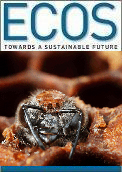
|
Published: 7 May 2012
New green ‘caps’ to rehabilitate old dumps
A plant-based technique for capping and cleansing old urban landfill sites and mine dumps has been successfully trialled in South Australia.
Known as ‘phytocapping’, the technique uses green plants to reduce runoff through contaminated areas. Contaminated runoff pollutes groundwater and streams, and discharges greenhouse gases into the atmosphere. The plants used to reduce runoff can later be harvested to produce clean energy.
The CRC for Contamination Assessment and Remediation of the Environment (CRC CARE) and technology firm FibreCell Pty Ltd proved the technique using a combination of a clay cap and giant reed – a fast-growing, bamboo-like plant from India – to seal an old landfill at Salisbury, SA.
‘The giant reeds reduce the amount of water entering the old landfill. This in turn reduces the organic decomposition that leads to greenhouse emissions from the landfill, and prevents toxic chemicals and heavy metals from leaching out of the landfill,’ says CRC CARE’s Professor Nanthi Bolan.
The giant reeds grow rapidly and are harvested as a biofuel overseas, with the potential to be used as biochar for carbon sequestration and soil improvement in agriculture.
‘This makes the process of cleaning up an old toxic dump useful and potentially quite profitable,’ says Prof. Bolan.
‘The giant reed’s growing characteristics are well known and understood by Fibrecell Australia after seven years of research. This knowledge has enabled them to develop effective management protocols that optimise the benefits of giant reed without adversely affecting the ecosystem.’
Australia has an estimated 160,000 contaminated sites, including many old urban refuse dumps and landfills within and around our expanding cities.
In separate research, the ‘green cap’ of reeds has also proved useful in preventing dust containing toxic minerals from blowing from old mine and mineral processing tailings across inhabited areas.
Because the ‘alien’ giant reed may present a biosecurity risk in some areas, the CRC has tested a range of native Australian grasses and plants to determine which are most effective at extracting toxic minerals for safe disposal.
A unique feature of the Salisbury project was the use of biosolids – the solid residue left over from sewage treatment – as a nutrient source for the green cap crops; the use of wastewater to irrigate them; and the innovative use of industrial wasteland to grow a product with real market value for energy generation.
‘Over time we expect the degraded land to be gradually cleaned up and made safe for other uses, such as urban development,’ Prof. Bolan says.
‘Around Australia there are literally tens of thousands of old landfills, dumps and factory sites that are too contaminated to use in their present condition – but which can be cleansed and turned back into high-value real estate by low-cost techniques such as green caps.’
Source: CRC CARE




